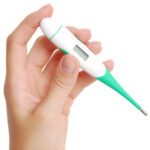Key Facts
- Fertility Awareness-Based (FAB) is a method that prevents pregnancy by not having intercourse on the days you are most fertile.
- FAB is not a reliable method of birth control but it is more effective when condoms are also used.
- It takes time and practice to know exactly when you’re ovulating for this method to be most effective.

FAB is also known as natural family planning. Some people who were born with reproductive organs, choose this method because of concerns about side effects from other contraceptive methods such as . Others may use the FAB method of contraception for religious or cultural reasons. Whatever the reason, it takes a lot of practice to learn how to use this method correctly. Out of all the different methods of birth control, this method is the least effective in preventing pregnancy.
What are the fertility awareness-based (FAB) methods of contraception?
FAB methods are a way to become aware of the time when you ovulate so that you can prevent pregnancy. Couples who are trying to become pregnant can also use this method. When using this method to prevent pregnancy, sexual partners do not have sexual intercourse during ovulation. Ovulation is the time during a person’s menstrual cycle when they are most likely to become pregnant.
| Out of 100 women using Fertility Awareness Based Methods | |
| Typical use: 24 women become pregnant | |
| Perfect use: 3-5 women become pregnant | |
How do you practice the fertility awareness-based methods?
First, you’ll need to figure out when you are ovulating (when your ovaries release the egg each month). People who were assigned female at birth are fertile (can become pregnant) 5 days before ovulation (when an egg is released) up to 24 hours after ovulation has happened. Sperm can live for up to 5 days and the egg lives 24 hours. So even if you are not ovulating the day you have sexual intercourse, you can still get pregnant if you start ovulating within 5 days because the sperm can still be alive. If you have ovulated (released an egg) and you have sex the next day, you can get pregnant since the egg can still be fertilized. To avoid pregnancy you should NOT have sexual intercourse a few days before and the day after you ovulate. Keep in mind that ovulation may be tricky to predict because teens often have irregular cycles.
What are the different FAB methods?
You can use one method or a few methods to find out when you are ovulating. These methods include:
- Checking your basal body temperature; taking your temperature first thing in the morning with a special thermometer before you get out of bed and then charting it on a special form.
- Observing changes in your cervical mucus.
- Keeping track of levels of LH (a hormone that starts ovulation) by checking your urine with an ovulation kit.
- Downloading apps to help you keep track of your menstrual cycle and when you’re ovulating. The calendar method is appropriate if your menstrual cycles are between 26-32 days. If your period comes less than every 26 days or more than every 32 days, this is not a good method for you.
Once you figure out when you are ovulating, you should NOT have sexual intercourse during your fertile time. The fertility awareness-based methods can be tricky to figure out, but if you think using this method to prevent pregnancy is a good idea for you, talk to your health care provider.
How effective are the fertility awareness-based methods (FAB)?
If person uses the FAB methods every time they have sexual intercourse and follow instructions perfectly every time (a person has to figure out when they are ovulating, then they must not have sexual intercourse during this time), it is 95% effective. This means that if 100 people use the FAB methods all the time and always use them perfectly, and their cycles are always regular at least 5 people will become pregnant in a year.
Perfect use hardly ever happens (especially with this method) so this method is typically only 76% effective. This means that if 100 people use the FAB methods, 24 people will become pregnant in a year. Failure rates can be high using the FAB methods if you have irregular periods, which are more common in teens. The FAB methods do not protect against sexually transmitted infections- you must use condoms.
Are there any problems with the fertility awareness-based method (FAB)?
The FAB method is not the best type of contraception, but it is considered “natural” and many religions approve it. The good thing is that there are no side effects from the FAB method. However, the fertility awareness-based methods are not very reliable. Illness can change your body temperature and vaginal infections can cause changes in the mucus of your cervix. With these changes, there’s a greater chance that you can get pregnant.
Our health guides are developed through a systematic, rigorous process to ensure accuracy, reliability, and trustworthiness. Written and reviewed by experienced healthcare clinicians from Boston Children's Hospital, a Harvard Medical School teaching hospital and consistently ranked as a top hospital by Newsweek and U.S. News & World Report, these guides combine clinical expertise, specialized knowledge, and evidence-based medicine. We also incorporate research and best practices from authoritative sources such as the CDC, NIH, PubMed, top medical journals, and UpToDate.com. Clinical specialists and subject matter experts review and edit each guide, reinforcing our commitment to high-quality, factual, scientifically accurate health information for young people.


